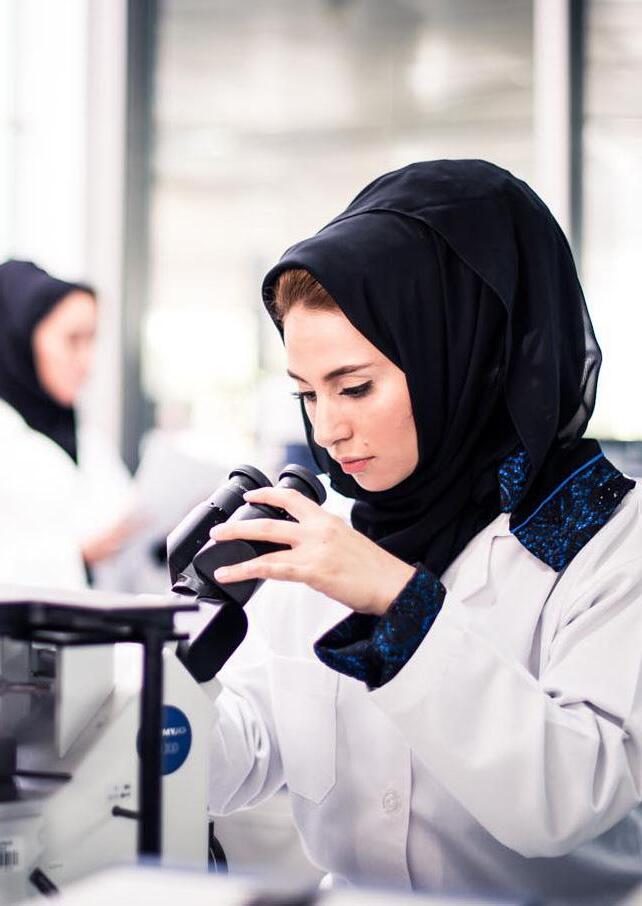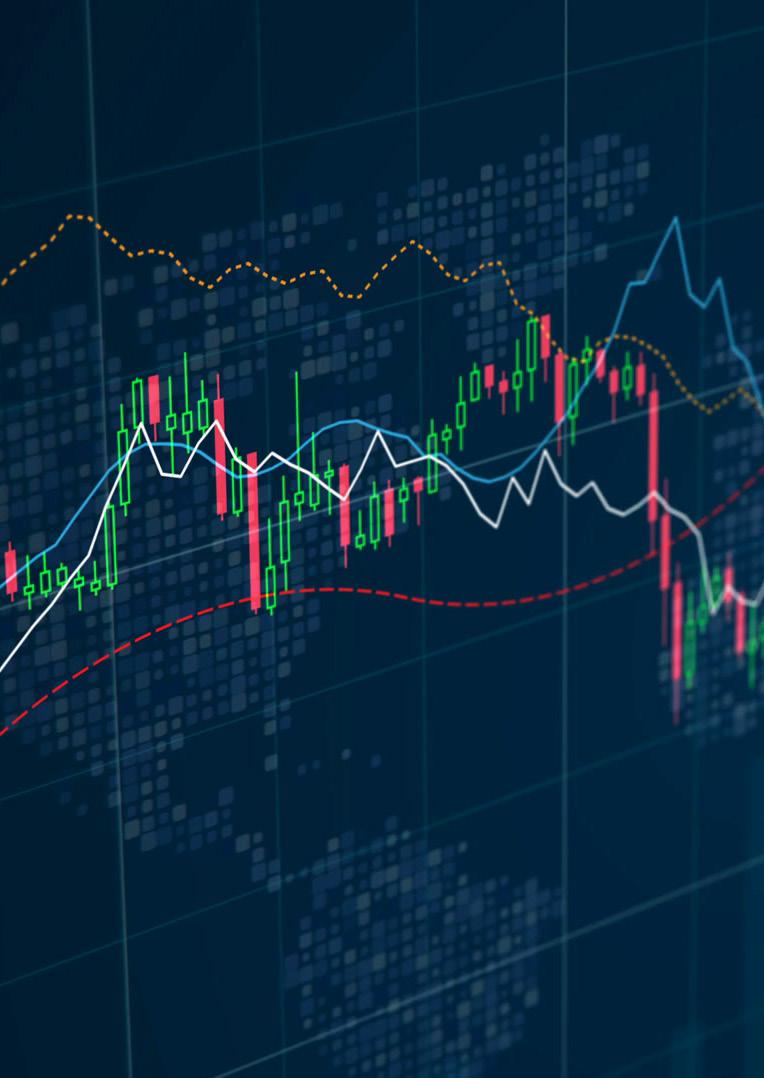2019 - 2020
I am delighted to provide this introduction to Khalifa University’s Fact Book for 2019-2020. Khalifa University of Science and Technology (KU) was established in 2017 by Presidential Decree by merging together the three world-class universities of Khalifa University of Science, Technology and Research (KUSTAR), The Petroleum Institute, and Masdar Institute of Science and Technology.
This Fact Book is the first one prepared to describe the activities of KU after the merger. Khalifa University’s research and academic activities now cover a broad range of disciplines in science, engineering, and medicine through its three colleges, three research institutes, 18 research centers, and 36 academic departments. Our distinguished faculty of national and international reputation, coupled with a strong tradition of collaboration and a deep commitment to fundamental science and use-inspired research, have enabled the University to achieve meaningful innovations in key areas of energy, water, aerospace, healthcare, aerospace, advanced materials, robotics and ICT.
In Academic Year 2019-20, a total of 14 undergraduate engineering degrees were offered, including four in the College of Arts and Sciences and ten in the College of Engineering. All eligible programs have
received ABET accreditation from the Engineering Accreditation Commission (EAC).
On the graduate level, 24 degree options were offered by the university in 2019-20, including one Master’s degree and five Doctorate degrees in the College of Arts and Sciences, and 15 Master’s degrees and two Doctorate degrees in the College of Engineering.
Additional engineering and science offerings planned for the upcoming academic year will further enhance our ability to provide KU students with a unique interdisciplinary environment in which students can tackle real-world challenges and a research culture that seeks truly deep impact through rigorous scholarship.
In this Fact Book, you will find information about student enrollment and demography, faculty, staff and facilities, and a sampling of the university’s research and teaching activities. I hope you find this collection of information to be informative, and to provide an accurate indication of our status at the close of this academic year.
Dr. Arif Sultan Al Hammadi Executive Vice President Khalifa University of Science and Technology
Fall 2019/20 Enrollment by Level
Fall 2019/20 Enrollment
Undergraduate Students - Level (Number)
Undergraduate Level Number
Fall 2019/20 Student to Faculty Ratio Number of Students 3419
3419
Number of Students
Number of Faculty
366 Student/Faculty Ratio 9.3
366
Number of Faculty
9.3 :
Student/Faculty Ratio
UG Student Enrollment Fall 2019/20 Bachelor Students - Emirate
Fall 2019/20 UG Nationals by Home Emirate*
Fall 2019/20 Enrollment Undergraduate National Students - Home Emirate (%)
* Undergraduate includes Bachelor and Foundation students
Fall 2019/20 UG Student Enrollment By Gender*
Fall 2019/20 UG Student Enrollment by Nationality*
Fall 2019/20 Enrollment Undergraduate Students - Gender (%)
Fall 2019/20 Enrollment Undergraduate Students - Nationality (%)
*Undergraduate includes Bachelor and Foundation students
Fall 2019/20 UG Student Enrollment by Age Distribution & Gender*
Fall 2019/20 Enrollment Undergraduate Students - Age Distribution & Gender (%)
*Undergraduate includes Bachelor and Foundation students
Aerospace Engineering
Applied Mathematics & Stat.
Biomedical Engineering
Chemical Engineering
Chemistry
Civil Engineering
Communication Engineering
Computer Engineering
Electrical & Electronic Engr.
Engineering Industrial and Systems Engr.
Engineering
Geosciences
Fall 2019/20 Enrollment
Bachelor Students - Program (%)
Aerospace Engineering
Applied Mathematics & Stat.
Biomedical Engianeering
Chemical Engineering Chemistry
Engineering Communication Engineering
Engineering
Fall 2019/20 BSc Student Gender
Fall 2019/20 Enrollment
Bachelor Students - Gender By Program (%)
Aerospace Engineering
Applied Mathematics & Stat.
Biomedical Engineering
Chemical Engineering Chemistry
Civil Engineering
Communication Engineering
Computer Engineering
Electrical & Electronic Engr.
Electrical Engineering
Industrial and Systems Engr.
Mechanical Engineering
Petroleum Engineering
Petroleum Geosciences
Aerospace Engineering
Applied Mathematics & Stat.
Biomedical Engineering
Chemical Engineering
Chemistry
Civil Engineering
Communication Engineering
Fall 2019/20 Enrollment
Bachelor Students - Nationality By
Aerospace Engineering
Applied Mathematics & Stat.
Biomedical Engineering
Chemical Engineering Chemistry
Civil Engineering
Communication Engineering
Computer Engineering
Electrical & Electronic Engr.
Electrical Engineering
Industrial and Systems Engr.
Mechanical Engineering
Petroleum Engineering Petroleum Geosciences Physics Undeclared
Fall 2019/20 Enrollment
Bachelor Students - CGPA Distribution By Program (%)
Aerospace Engr.
Applied Mathematics & Stat.
Biomedical Engr.
Chemical Engr.
Chemistry
Civil Engr.
Communication Engr.
Computer Engr.
Electrical & Electronic Engr.
Electrical Engr.
Industrial and Systems Engr.
Mechanical Engr. Petroleum Engr.
• Includes students who are seeking a degree only.
• New students are excluded since CGPA is as of the beginning of Fall 2019/20.
Fall 2019/20 UG Student Enrollment from Vocational Schools*
• Undergraduate includes Bachelor and Foundation students
PG Student Enrollment Fall 2019/20 Master Students - Emirate
Fall 2019/20 Enrollment
Master National Students - Home Emirate (%)
Fall 2019/20 PG Nationals by Home Emirate
Fall 2019/20 Enrollment
Doctorate National Students - Home Emirate (%)
Doctorate Students - Emirate
Abu Dhabi
Fall 2019/20 PG Student Enrollment by Gender
Master Students - Gender
Fall 2019/20 Enrollment Master Students - Gender (%)
Students -
Fall 2019/20 Enrollment Doctorate Students - Gender (%)
Fall 2019/20 PG Student Enrollment by Nationality
Master Students Nationality
Fall 2019/20 Enrollment Master Students – Nationality (%)
Doctorate Students Nationality
Fall 2019/20 Enrollment Doctorate Students - Nationality (%)
Doctorate Students - Age Distribution & Gender
Gender
Fall 2019/20 Enrollment
Doctorate Students - Age Distribution & Gender (%)
Age 50-55 %
Fall 2019/20 PG Student Enrollment by Program
Applied Chemistry
Chemical Engineering
Computer & Information Science
Electrical & Computer Eng
Engineering
Engr. Systems and Management
Health, Safety &Env. Engr.
Information Security
International & Civil Security
Materials Sc. and Eng.
Mechanical Engineering
Nuclear Engineering Petroleum Engineering
Geosciences
Fall 2019/20 Enrollment Master Students - Program (%)
Chemistry
Chemical Engineering
Computer & Information Science
Electrical & Computer Eng Engineering
Engr. Systems and Management
Health, Safety &Env. Engr.
Information Security
International & Civil Security
Sc. and Eng.
Engineering
Geosciences
Fall 2019/20 Enrollment Doctorate Students - Program
Doctorate Programs Number of Students Percentage
Chemical Engineering
Interdisciplinary Engineering
Geosciences PhD in Engineering
Fall 2019/20 Enrollment Doctorate Students - Program (%)
Fall 2019/20 Enrollment
Master Students - Gender By Program
Applied Chemistry
Chemical Engineering
Computer & Information Science
Electrical & Computer Eng Engineering
Engr. Systems and Management
Health, Safety &Env. Engr.
Information Security
International & Civil Security
Materials Sc. and Eng.
Mechanical Engineering
Nuclear Engineering
Petroleum Engineering
Petroleum Geosciences
Sustainable Critical Infra.
Water & Environmental Eng.
Fall 2019/20 Enrollment
Doctorate Students - Gender By Program
Doctorate Programs
Fall 2019/20 Enrollment
Doctorate Students - Gender By Program (%)
Fall 2019/20 Enrollment
Master Students - Nationality By Program (%)
Applied Chemistry
Chemical Engineering
Computer & Information Science
Electrical & Computer Eng Engineering
Engr. Systems and Management
Health, Safety &Env. Engr.
Information Security
International & Civil Security
Materials Sc. and Eng.
Mechanical Engineering
Nuclear Engineering
Petroleum Engineering
Petroleum Geosciences
Sustainable Critical Infra.
Water & Environmental Eng.
Fall 2019/20 Enrollment Doctorate Students - Nationality By Program (%)
Doctorate Programs
Chemical Engineering
Engineering
Geosciences
in Engineering
Geosciences PhD in Engineering
Fall 2019/20 Enrollment
Master Students - CGPA Distribution By Program (%)
Applied Chemistry
Chemical Engineering
Computer & Information Science
Electrical & Computer Eng
Engineering
Engr. Systems and Management
Health, Safety & Env. Engr.
Information Security
International & Civil Security
Materials Sc. and Eng.
Mechanical Engineering
Nuclear Engineering
Petroleum Engineering
Petroleum Geosciences
Sustainable Critical Infra.
Water & Environmental Eng.
* New students are excluded since CGPA is as of the beginning of Fall 2019/20.
Fall 2019/20 PG Student CGPA
Distribution by Program
Fall 2019/20 Enrollment
Doctorate Students - CGPA Distribution By Program (%)
* New students are excluded since CGPA is as of the beginning of Fall 2019/20.
Graduates 2018/19 691 Graduates in Academic Year 2018/19 Fall 2018, Spring 2019 and Summer 2019
Graduates 2018/19 by Level
Graduates 2018/19 by Level %
Graduates 2018/19 by Program
Bachelor Graduates Programs
Aerospace Engineering
Applied Mathematics & Stat.
Biomedical
Graduates 2018/19
Bachelor Programs (%)
Aerospace Engr.
Applied Mathematics & Stat.
Biomedical Engr.
Chemical Engr.
Civil Engr.
Communication Engr.
Computer Engr.
Electrical & Electronic Engr.
Electrical Engr.
Industrial and Systems Engr.
Mechanical Engr.
Petroleum Engr.
Petroleum Geosciences
Master Graduates Programs
Applied Chemistry
Chemical Engineering
Computer & Information Science
Electrical & Computer Eng
Electrical Engineering
Electrical Power Engineering
Engineering
Engr. Systems and Management
Health, Safety &Env. Engr.
Information Security
International & Civil Security
Materials Sc. and Eng.
Mechanical Engineering
Microsystems Engineering
Nuclear Engineering
Applied Chemistry
Chemical Engineering
Computer & Information Science
Electrical & Computer Eng
Electrical Engineering
Electrical Power Engineering Engineering
Engr. Systems and Management
Health, Safety &Env. Engr.
Information Security
International & Civil Security
Materials Sc. and Eng.
Mechanical Engineering
Microsystems Engineering
Nuclear Engineering
Petroleum Engineering
Petroleum Geosciences
Sustainable Critical Infra.
Water & Environmental Eng.
Doctorate Graduates Programs
Graduates 2018/19
Bachelor Programs - CGPA Distribution By Program (%)
Aerospace Engineering
Applied Mathematics & Stat.
Biomedical Engineering
Chemical Engineering
Civil Engineering
Communication Engineering
Computer Engineering
Electrical & Electronic Engr.
Electrical Engineering
Industrial and Systems Engr.
Mechanical Engineering
Petroleum E ngineering
Geosciences
Fall 2019/20 Faculty By Department
College of Arts and Sciences Departments Number of Faculty Percentage
Fall 2019/20 Faculty College of Arts & Sciences - Department (%)
Fall 2019/20 Faculty College of Engineering
College of Engineering Departments
Aerospace Engineering
Biomedical Engineering
Chemical Engineering
Civil Infrastructure and Environmental Engineering
Electrical and Computer Engineering
Industrial and Systems Engineering
Mechanical Engineering
Nuclear Engineering Petroleum Engineering
Number of Faculty Percentage
Fall 2019/20 Faculty College of Engineering - Department (%)
Fall 2019/20 Faculty Rank by College
College of Arts and Sciences - Rank
Number of Faculty Percentage
Fall 2019/20 College of Arts & Sciences Faculty Rank (%)
College of Engineering - Rank
Lecturer
Senior Lecturer
Assistant Professor
Associate
Fall 2019/20 College of Engineering Faculty Rank (%)
Number of Faculty Percentage
Fall 2019/20 Faculty Rank by Department
Fall 2019/20 College of Arts & Sciences Faculty RankDepartment (%)
Earth Sciences
Humanities and Social Sciences
Preparatory Program
Fall 2019/20 Faculty Rank by Department
Fall 2019/20 College of Engineering Faculty RankDepartment (%) Lecturer %
Aerospace Engineering
Biomedical Engineering
Chemical Engineering
Civil Infrastructure and Environmental Engineering
Electrical and Computer Engineering
Industrial and Systems Engineering
Mechanical Engineering
Nuclear Engineering
Petroleum Engineering
Fall 2019/20 Faculty Age Distribution by College
Fall 2019/20 Faculty Age Distribution - College (%)
College of Arts and Sciences
College of Engineering
Fall 2019/20 Faculty Age Distribution by Department Fall 2019/20 College of Arts and Sciences Faculty Age Distribution - Departments (%)
Fall 2019/20 Faculty Age Distribution by Department Fall 2019/20 College of Engineering Faculty
Age Distribution - Departments (%)
Aerospace Engineering
Biomedical Engineering
Chemical Engineering
Civil Infrastructure and Environmental Engineering
Electrical and Computer Engineering
Industrial and Systems Engineering
Mechanical Engineering
Nuclear Engineering
Petroleum Engineering
Fall 2019/20 Faculty Gender Distribution by College College of
2019/20 Faculty
Fall 2019/20 Faculty Gender Distribution by Department
Fall 2019/20 College of Engineering Faculty
Gender Distribution - Department (%)
Aerospace Engineering
Biomedical Engineering
Chemical Engineering
Civil Infrastructure and Environmental Engineering
Electrical and Computer Engineering
Industrial and Systems Engineering
Mechanical Engineering
Nuclear Engineering
Engineering
Fall 2019/20 National Faculty
By College Fall 2019/20 National Faculty by Department
Fall 2019/20 College of Arts and Sciences National Faculty - Department (%)
Fall 2019/20 College of Engineering
National Faculty - Department (%)
Aerospace Engineering
Biomedical Engineering
Chemical Engineering
Civil Infrastructure and Environmental Engineering
Electrical and Computer Engineering
and Systems Engineering
Mechanical Engineering
Researchers Fall 2019/20 Fall 2019/20 Khalifa University Research Centers
Advanced Digital & Additive Manufacturing Center (ADAM)
Advanced Power and Energy Center (APEC)
Aerospace Research and Innovation Center (ARIC)
Center for Catalysis and Separate (CeCaS)
Center for Cyber-Physical Systems (C2PS)
Center for Digital Supply Chain and Operations Management (DSOM)
Center for Membranes & Advanced Water Technology (CMAT)
Emirates ICT Innovation Center (EBTIC)
Gas Research Center (GRC)
Healthcare Engineering Innovation Center (HEIC)
Khalifa University Center for Autonomous Robotic Systems (KUCARS)
Khalifa University Center for Biotechnology (BTC)
Nuclear Technology Research Center (NTC)
Research and Innovation Center on CO2 and Hydrogen (RICH)
Research Center for Renewable Energy Mapping and Assessment (ReCREMA)
Fall 2019/20 Researchers in Research Centers
Research Center/Project Number of Researchers
Research Productivity and Analysis KU Scholarly Output The number of publications of a selected entity.
Khalifa University Scholarly Output
Count Total citations received by publications of the selected entities.
Khalifa University Citation Count
KU Field-Weighted Citation Impact The ratio of citations received relative to the expected world average for the subject field, publication type and publication year.
Khalifa University Field-Weighted Citation Impact "DATA SOURCE : SCOPUS - LAST UPDATED : 9 JULY 2020"
KU Outputs in Top Citation Percentiles Percentage of publications of a selected entity that are highly cited, having reached a particular threshold of citations received.
Outputs in Top 1% Citation Percentiles
Outputs in Top 5% Citation Percentiles
Outputs in Top 10% Citation Percentiles
SOURCE : SCOPUS - LAST UPDATED : 9 JULY 2020"
KU Publications in Journal Quartiles Percentage of publications that have been published in the selected journal quartiles.
of Publications in Q1 (Top 25%) Journal Quartiles
Khalifa University % of Publications in Q1 (Top 25%) Journal Quartiles
KU Publications in Top Journal Percentiles Percentage of publications of a selected entity that have been published in the world’s top journals.
Publications in Top 1% Journal Percentiles
Publications in Top 5% Journal Percentiles
Publications in Top 10% Journal Percentiles
KU Citations per Publication The average number of citations received per publication.
of Citations per Publication
Khalifa University Number of Citations per Publication
KU Cited Publications Percentage of Publications that have received at least one citation.
Khalifa University % of Cited Publications
KU Number of Citing Countries The number of distinct Countries represented by the publications citing a selected entity.
of Citing Countries
Khalifa University Number of Citing Countries
KU Collaboration Impact The extent of international institutional co-authorship.
Khalifa University % of publications that have at one international coauthor
"DATA SOURCE : SCOPUS - LAST UPDATED : 9 JULY 2020"
















